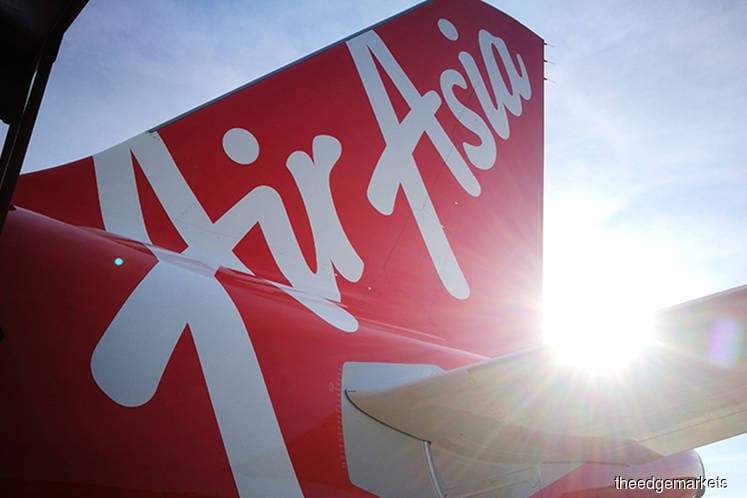
KUALA LUMPUR (April 27): AirAsia Group Bhd posted a load factor of 80% for the first quarter of 2020 (1Q20), beating its expectation of 77% and despite the weak travel demand due to travel restrictions amid the Covid-19 pandemic.
In a statement, the airline said this was achieved through proactive capacity management, mainly in February and March, with AirAsia Malaysia and AirAsia Thailand seeing the most notable cuts.
The group’s consolidated air operator certificates (AOCs) saw steady load factor of 78%, while the number of passengers fell 21% year-on-year (y-o-y) to 9.9 million amid an 11% capacity cut.
“In 1Q20, AirAsia Malaysia reduced its capacity by 17% y-o-y, as business was heavily interrupted in light of the increase in Covid-19 cases in many markets and the imposed Movement Control Order (MCO) in Malaysia that began on March 18. AirAsia Malaysia carried 27% less passengers y-o-y, with a reasonably strong load factor of 77%.
“AirAsia Indonesia posted a 10% y-o-y increase in capacity for the quarter, even though its available seat kilometres (ASK) retracted by 4%, as the company redeployed excess capacity from international to domestic sectors. Passengers carried decreased by 7%, as travel demand in the region started to weaken, while load factor was moderate at 74%. During the quarter, AirAsia Indonesia began flying Jakarta-Medan,” the airline group said.
Meanwhile, AirAsia Philippines saw a 9% decline in passengers carried y-o-y, with a total of 1.8 million passengers.
AirAsia Philippines’ capacity was reduced by 1% y-o-y, as domestic and international routes were halted in mid-March, while load factor was steady at 84%.
AirAsia Thailand continued its capacity realignment and route rationalisation during the quarter, amid the low demand, with capacity reduced by 17%, while ASK fell 30%.
The AOC’s network was realigned through frequency reduction and flight suspension on international routes, due to increasing travel restrictions and redeployment of excess capacity to domestic sectors.
AirAsia India saw a 30% growth in passengers carried to 2.5 million, due to the addition of 10 aircraft y-o-y, closing the quarter with a total of 30 aircraft. Load factor stood at 81%.
AirAsia Japan’s capacity expanded by 48%, while ASK increased by 30% y-o-y, with the addition of the Nagoya-Sendai route, which was launched in 3Q19. The ACO’s load factor was soft at 72%, as carried passengers increased at a slower rate of 32% y-o-y.
“At the end of 1Q20, AirAsia had announced a temporary fleet hibernation across its AOCs, in view of the Covid-19 pandemic causing large-scale border restrictions in many countries. The effort to assist in containing the spread of Covid-19 is in line with the movement and travel restrictions imposed by governments of the markets that the group fly to.
“While the safety and well-being of passengers and employees remain the highest priority, AirAsia continues to proactively assess the situation and is prepared to gradually resume its flights as soon as possible,” AirAsia said.
The group expects to end the year with a total of 244 aircraft, one less from 245 aircraft as at end-2019.
AirAsia’s share price closed one sen or 1.29% higher at 78.5 sen today, giving it a market capitalisation of RM2.62 billion.
#dudukrumahdiamdiam. We will deliver the news to you at theedgemarkets.com.